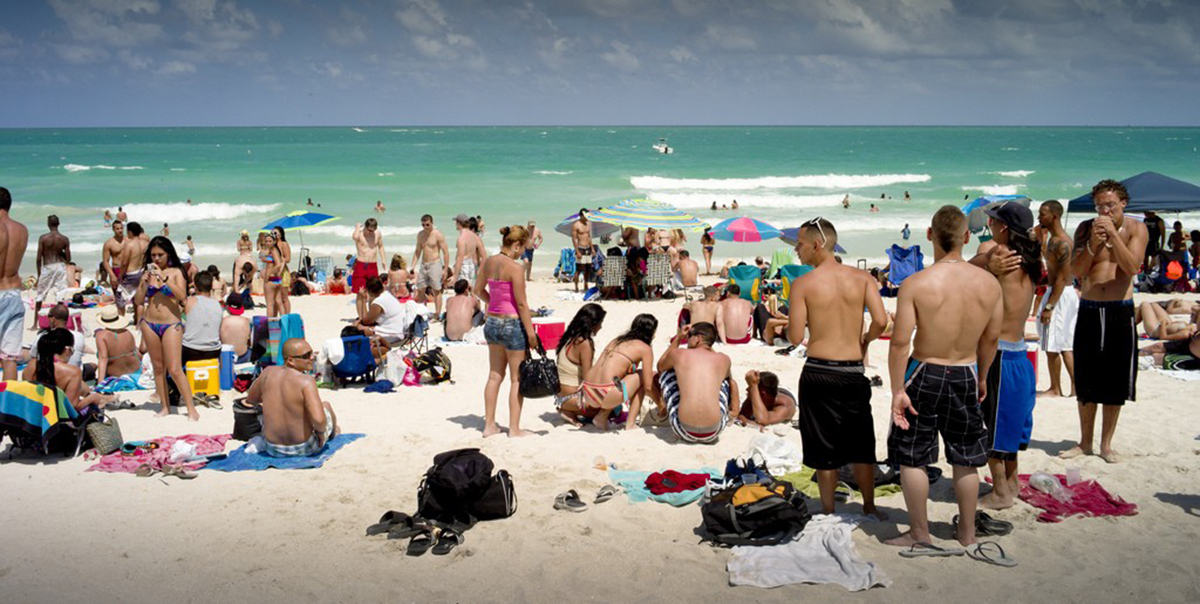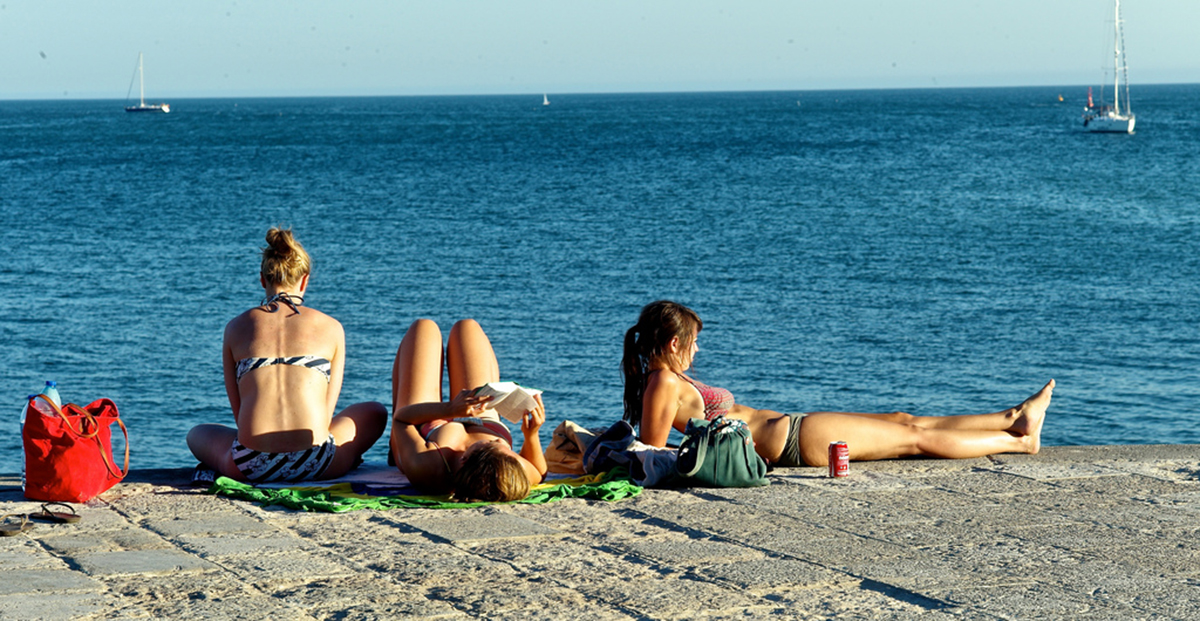One of the persistent puzzles of cardiovascular medicine has been finding the reasons why high blood pressure, heart attacks, and strokes are more common in winter, and more common the farther one travels away from the equator. High blood pressure and heart attacks are much more common in Scotland than in Spain, and in Finland than in Greece. Even when people eat healthy diets high rates of high blood pressure and cardiovascular disease persist in cold, dark, damp parts of the world, leading researchers at the University of Southampton in England working with scientists at the University of Edinburgh in Scotland to investigate a possible connection between sunshine and blood pressure.

Twenty-four healthy volunteers were recruited to participate in the study. They were asked to submit to two different sessions in which they received enough UVA (ultraviolet A) light on their forearms from tanning lamps used for 20 minutes at a time to cause a mild sunburn. (The purpose of the dosage was not to induce sunburn, but to be sure the volunteers received enough light to have an effect.)
The researchers ran two different sessions to determine whether light or heat might be lowering blood pressure. In one session, the volunteers were exposed to both the UVA radiation and the heat from the lamps. In the other, the volunteers were exposed to strong light containing UVA rays but not the heat from the lamp. The researchers measured their blood pressure before and after exposure to light, and took skin samples to measure nitrates, nitric oxide (a free radical made from nitrates that dilates arteries and lowers blood pressure), and vitamin D.
The researchers found that:
- Exposure to strong light containing UVA radiation lowered blood pressure, with or without heat.
- Vitamin D levels not change during the UVA treatment sessions and so were not causing the lowering of blood pressure.
- Nitric oxide levels rose in the skin of the arm without a corresponding increase in the activity of an enzyme that makes it, that is, shining intense UVA light on the skin released this artery-opening chemical from already-existing stores.
See Also: Vitamin D For Diabetes, Cancer, And Heart Disease
This unexpected effect of sunlight could explain why people who live in cold, damp, climates in countries closer to the poles have higher rates of hypertension, myocardial infarction (heart attack), and cerebrovascular accidents, including brain aneurysms and strokes. The authors of the study recognize that it is important to avoid sunburn to minimize the risk of skin cancer, but some exposure to the UVA rays of the sun is necessary not only for the body's production of vitamin D but also for the maintenance of healthy blood pressure. Spending time in the sun, whether at work or play or simply sunbathing at the beach, or daily exposure to a sun lamp, at levels that do not, unlike this experiment, cause burning of the skin, may be essential to cardiovascular health.
Surprising Benefits of Sunshine for Cardiovascular Health
The study in the UK is not the only investigation into the role of sunshine in maintaining cardiovascular health. Other research has found:

- High cholesterol cancels out some of the benefits of sunshine. A study in Spain found that people who had untreated high cholesterol tended to have lower levels of vitamin D, even if they got lots of sun, even during the summer. People who took statins - cholesterol lowering drugs to control high cholesterol had higher levels of vitamin D.
- Smoking cancels out some of the benefits of sunshine, even in sunny climates, and even in summer.
- Vitamin D status affects both bone and muscle strength, and helps prevent injuries that would interfere with getting enough exercise to support cardiovascular health.
- In the People's Republic of China, nearly everyone of any age fails to get enough sun, and nearly everyone needs to take a vitamin D. One of the seldom-reported findings of the famous China Study was that the best predictor of whether people in China would develop cardiovascular disease was whether or not they received enough sunshine, more than diet, antioxidant, or vitamin status.
- In the United States, however, it may be possible to get too much sunshine for cardiovascular health. A study by the Nutritional Epidemiology Branch of the National Cancer Institute of 346,615 fair skinned Americans found that those who got the most sunshine were slightly more likely, about 6% more likely, to develop cardiovascular disease, and the trend was significant (that is, the data did not suggest that there was any possibility that getting the highest levels of sun exposure might actually reduce the risk of cardiovascular disease).
- Vitamin D deficiency only seems to be a marker of cardiovascular disease, not a cause of cardiovascular disease. Having low vitamin D levels suggests that there is a higher risk of developing heart disease, but taking a vitamin D supplement will not necessarily lower the risk of developing heart disease.
That is because not getting enough sunshine both reduces the production of vitamin D and reduces the conversion of nitrates into nitric oxide by the skin. Getting enough sunshine will both restore production of vitamin D, which has many other uses in the body, and increase the production of nitric oxide to dilate blood vessels.
See Also: Low Sun Exposure And The Multiple Sclerosis
It is critical that the sun's UV rays not be blocked by sunscreen or sun block during those 20 minutes, however, or they will not convert nitrates into the nitrites needed to lower blood pressure, and they cannot used by the sun to power the production of vitamin D.
- Liu D, Fernandez BO, Hamilton A, Lang NN, Gallagher JM, Newby DE, Feelisch M, Weller RB. UVA Irradiation of Human Skin Vasodilates Arterial Vasculature and Lowers Blood Pressure Independently of Nitric Oxide Synthase. J Invest Dermatol. 2014 Jan 20. doi: 10.1038/jid.2014.27.
- Pilz S, Gaksch M, O'Hartaigh B, Tomaschitz A, März W. The role of vitamin D deficiency in cardiovascular disease: where do we stand in 2013? Arch Toxicol. 2013 Dec. 87(12):2083-103. doi: 10.1007/s00204-013-1152-z. Epub 2013 Oct 31. PMID: 24173581.
- Photo courtesy of martinvarsavsky by Flickr : www.flickr.com/photos/martinvars/5652250396
- Photo courtesy of Pedro Ribeiro Simões by Flickr : www.flickr.com/photos/pedrosimoes7/7833391474


Your thoughts on this